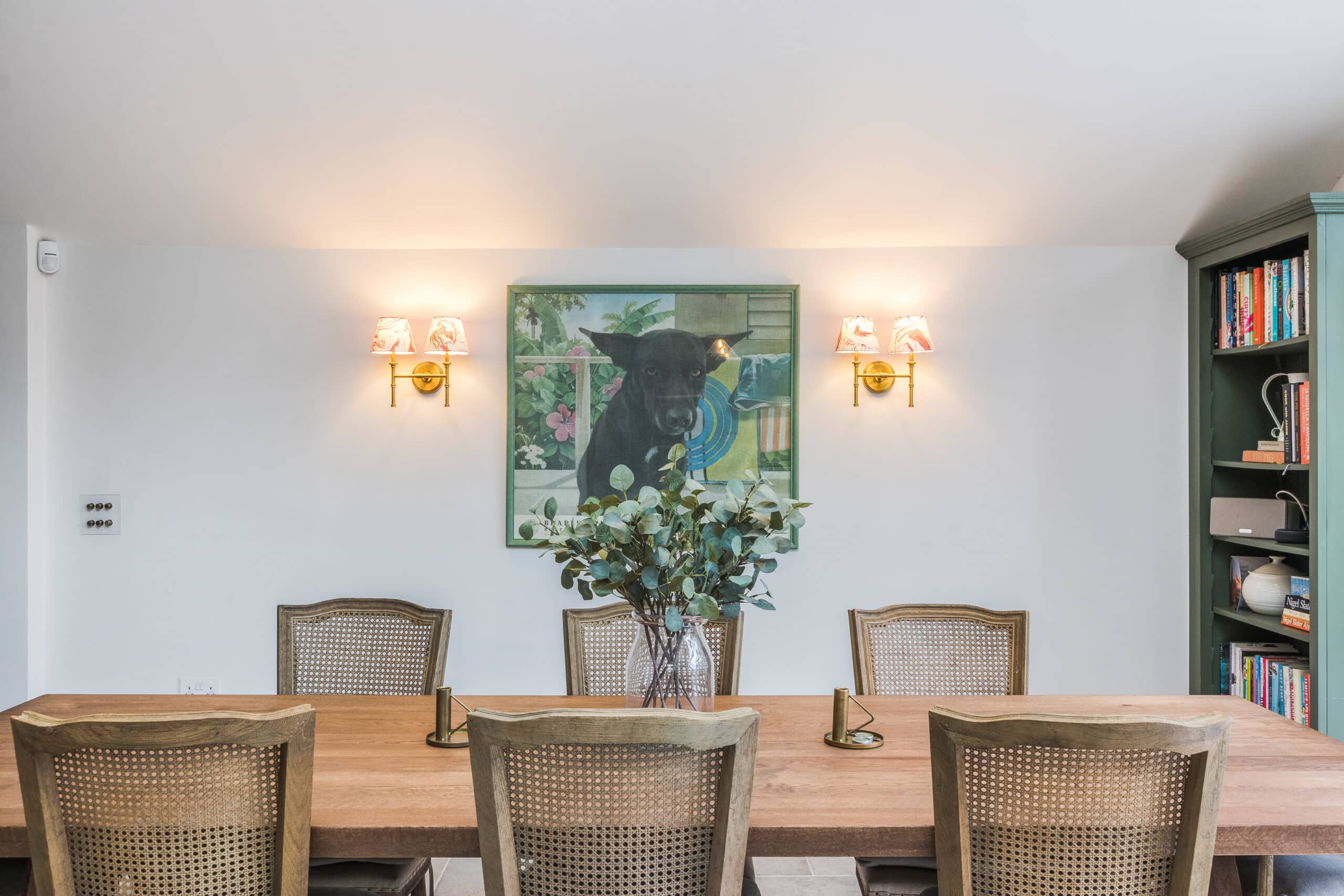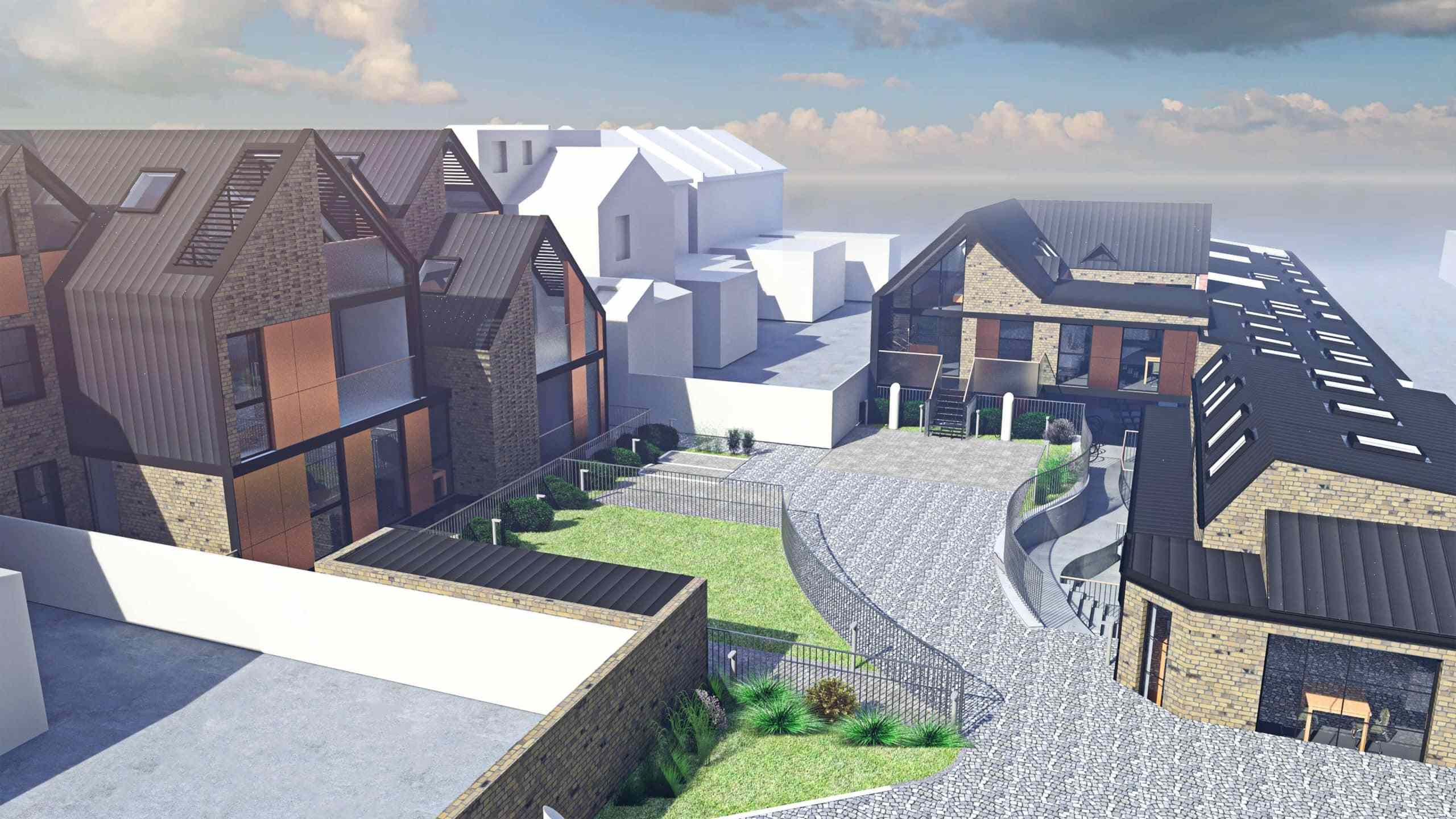
How Much Does a Residential Architect Cost?
Whether you’re embarking on a loft conversion, rear extension, new build or a simple renovation, having an architect on board can significantly enhance the potential of your project. Their involvement not only increases the likelihood of planning success but also ensures that every available inch of space in your project is utilised to its fullest.
Understanding the Costs
Architectural Fees
When hiring a residential architect, their fees can vary based on factors such as the complexity of the project, the architect’s experience, and the location.
Architectural fees encompass a range of services, from initial consultations to the finalisation of construction drawings. In London, where architectural services are in high demand, costs may reflect the level of expertise and the competitive nature of the market. It’s advisable to obtain quotes from several architects to gauge the average cost for your specific project. Keep in mind that experienced architects may charge higher fees, but their expertise often results in a smoother and more successful project.
Another point bearing in mind, is if your architect has won a prestigious award, or is part of a body like RIBA (The Royal Institute of British Architects). Both of these can also raise the price. However choosing a practice that’s part of RIBA is something to look out for, as that practice has to comply with strict conditions and regulations to be a member, giving you peace of mind for your project.
Additionally, some architects offer flexible fee structures, such as a percentage of the total project cost or fixed-rate packages. Discussing the fee structure upfront and clarifying what services are included in the quoted fee will help in avoiding any surprises later in the process.
As a general guideline for private residential projects, a residential architect commonly fees in the range of 8-12% of the total construction cost for comprehensive architectural services.
Scope Of Work
The scope of work plays a significant role in determining costs. Are you looking for a full-service package that includes both architectural design and interior design, or are you solely interested in architectural services? Clearly defining the scope upfront will help in estimating costs accurately.
Essentially, the scope of work is the roadmap that guides the architect through the project. A comprehensive scope may include site analysis, design development, architectural drawings, planning package and technical drawings for building regulations.
For those seeking a turnkey solution, where the architect manages every aspect from design to the selection of furnishings, the costs will naturally be higher. On the other hand, if a client only requires basic design services without extensive project management, the fees may be more budget-friendly. Understanding and aligning the scope of work with your project goals is key to a transparent and successful collaboration.

Interior Design Services
If you’re keen on creating a cohesive and visually stunning living space, you might want to explore the interior design services offered by your architect. Many architects, including AURA, seamlessly integrate architectural and interior design to ensure a harmonious blend between the exterior and interior of your home.
Collaboration With Property Developers
For those with a property development project, collaborating with a residential architect becomes even more crucial. The architect’s ability to balance aesthetics with practicality can significantly impact the marketability and success of a development. This collaborative approach may entail additional costs but can prove to be a worthwhile investment.
At AURA, we have a huge experience working with a variety of property developers, like XP Property!
Residential architects with experience in collaborating with property developers, like AURA, bring a unique skill set to the table. They understand the dynamics of the real estate market, the expectations of potential buyers, and the importance of cost-effective design solutions.
The collaboration between architects and property developers often involves a more extensive scope of work, including feasibility studies, zoning analysis, and more complicated planning applications. While this may result in higher upfront costs, the architect’s input can significantly enhance the project’s overall success. It’s essential for clients engaging in property development to view the architect as a strategic partner whose insights contribute to the project’s profitability.
Sustainability Focus
In an era where sustainability is at the forefront of design considerations, opting for an architect with a focus on eco-friendly solutions might be a priority. While sustainable design can lead to long-term cost savings, it’s essential to discuss how these features may affect the overall project budget.
While sustainable design may involve additional costs upfront, the long-term benefits can outweigh the initial investment. Energy-efficient homes often result in lower utility bills, and the use of durable, eco-friendly materials can reduce maintenance costs over time. Clients interested in sustainable design should openly discuss their priorities and budget constraints with the architect to find a balanced approach that aligns with both environmental goals and financial considerations.


Why Are Architect's Fees Not Standardised?
Architect’s fees for a residential project can vary based on the nature and scale of the undertaking. The absence of official standards or guidelines means that negotiation between the client and the architect determines the fee, taking into account factors such as:
- The scope of the architect’s services
- Project size
- Project complexity and specific requirements
- Scope of alterations to existing structures
- Restoration and preservation of historical buildings
- Level of design uniqueness
- The nature of the practice, with smaller offices or freelancers possibly having lower overhead costs
- The experience and expertise of the architect or firm. The saying ‘you get what you pay for’ often holds true in this context!
Is It Ever Charged On An Hourly Basis?
Yes. Quite often an architect will charge any additional work outside of the original scope at an hourly rate. With AURA it ranges between £100-£150, based on the qualification & experience of the Architect.

Why Invest In A Residential Architect?
Now that we’ve touched upon the costs, let’s take a moment to understand why hiring a residential architect is a valuable investment.
1. Expertise and Vision
An architect brings a wealth of expertise and a fresh perspective to your project.
Whether it’s maximising natural light, optimising room layouts, or integrating innovative materials, architects bring a level of insight that can elevate your project to new heights.
In addition to their technical knowledge, architects also stay up to date with the latest design trends and technologies. This ensures that your home not only meets current standards but also incorporates cutting-edge elements that add value and longevity to the design.
2. Navigating Regulations
Building regulations and permits can be a maze for most. A residential architect acts as your guide, ensuring that your project complies with all legal requirements, saving you from potential headaches down the road.
The world of building regulations and permits can be complex and overwhelming. Local authorities have specific requirements and codes that must be adhered to, and failure to do so can result in delays, fines, or even the halting of construction. A knowledgeable residential architect serves as a liaison between you and the regulatory landscape, ensuring that every aspect of your project meets the necessary standards.
3. Value Addition
A well-designed home not only enhances your quality of life but also adds significant value to your property. This is particularly crucial in the dynamic real estate market of London.
In a city like London, where the real estate market is highly competitive and property values are significant, the value-added by a well-designed home cannot be overstated. A thoughtfully designed and executed project can set your property apart in the market, attracting potential buyers or tenants and commanding a higher resale value.
4. Long-Term Savings
While the initial costs of hiring an architect may seem daunting, the long-term savings can outweigh them. A well-designed, energy-efficient home can lead to lower utility bills and maintenance costs over the years.
The financial benefits of hiring a residential architect extend beyond the completion of the project. A home designed with energy efficiency in mind can result in substantial long-term savings on utility bills. Architects are great at incorporating sustainable features, such as solar panels, energy-efficient HVAC systems, and eco-friendly materials, contribute to a home’s overall efficiency.
Additionally, a well-designed home often requires less maintenance over the years. Thoughtful material selections, durable construction methods, and attention to detail during the design phase contribute to the longevity of the structure. While the upfront costs may be higher, the reduction in ongoing maintenance expenses makes the initial investment in architectural services a wise financial decision.





